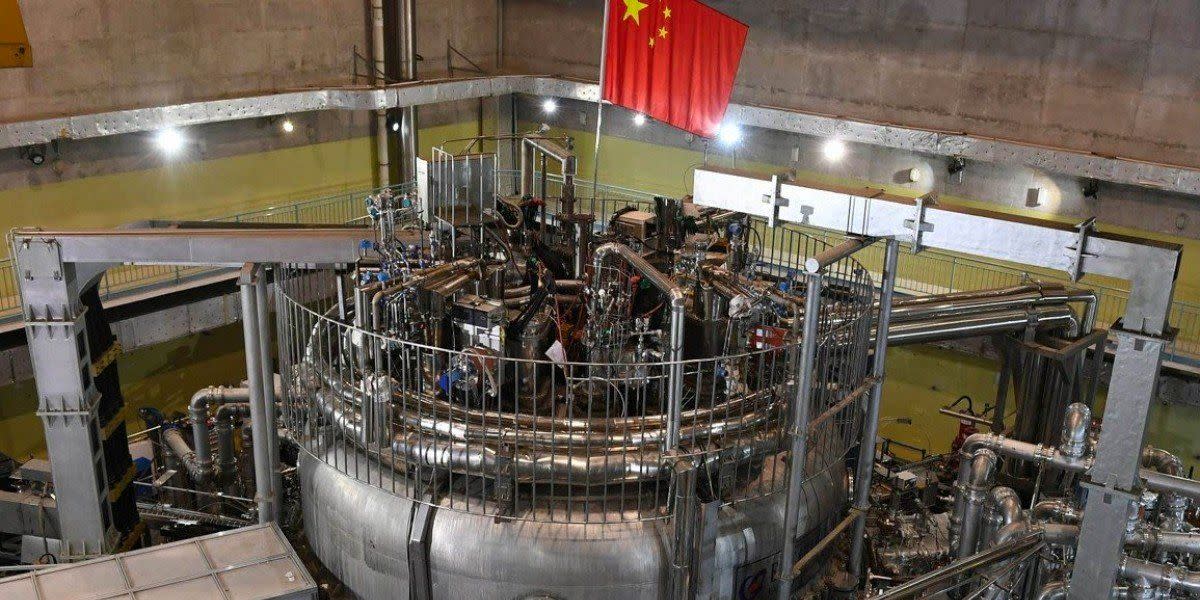China Just Turned On Its Artificial Sun

China has switched on its HL-2M EAST tokamak for its first planned full-strength fusion.
EAST, an "artificial sun," is global peers with ITER and hopes to reach some of the same milestones.
No tokamak reactor (or fusion reactor, period) has yet reached net productive energy.
China has switched on its record-setting “artificial sun” tokamak, state media reported today. This begins a timeline China hopes will be similar to the one planned by the global International Thermonuclear Experimental Reactor (ITER) project.
☢️ You love nuclear. So do we. Let's nerd out over nuclear together.
The HL-2M tokamak has been iterated since 2006, but today's switch-on represents the Experimental Advanced Superconducting Tokamak (EAST) team’s road to true fusion ignition after years of planning and work.
In 2018, EAST made news when the tokamak reached 180 million degrees. In 2019, EAST pushed the boat out further and announced plans to double that temperature in 2020—reaching the tokamak's prime operating temperature of 360 million degrees. This hasn't happened yet, but there’s still time in 2020, and COVID-19 has affected all the world’s scientific progress this year. If the EAST team is a few months late, we’ll still count that as a win.
Like many of the world’s tokamak experiments, EAST has reached fusion before. As a refresher, inside the donut-shaped (or, sometimes, more spherical) containment of a tokamak, sun-hot plasma swirls in a circle that’s held in place by supercooled electromagnets.
This magnetic field is the only thing floating between 360-million-degree plasma and a bunch of human-made materials that obviously can’t sustain that temperature. The plasma results from smashing different nuclei together, fusing them rather than splitting them.
📚 Further Reading: The Best Nuclear Books
When EAST was built in 2006, the team’s researchers began an escalating series of experiments. Part of this is simple proof of concept, because the temperatures inside tokamaks are almost unprecedented on Earth, period—at least on the surface during the Anthropocene.
As temperatures climb, the magnetic containment must also increase, and this has been a key point of failure (or at least “challenge”) for these reactors. Pushing each experimental run a little bit hotter and bigger has let researchers continue to shore up the external parts.
This means the outside chambers of these tokamak reactors are usually cryogenically cooled masterpieces in their own right, able to withstand conditions that would buckle almost anything else in the world. And even with the best minds in the world working on this idea for decades, scientists still haven’t made productive plasma.
EAST reached plasma for 10 seconds in 2018, which is a major milestone. But it’s just the very, very beginning . . . of the beginning.

Now that EAST has switched on for what its makers say is the real deal, the project has a lot to prove. It costs a huge amount of energy input to bring a tokamak reactor’s entire assembly up to speed. If a fusion reactor can’t easily outpace that input, it will never produce power, let alone the dream of virtually limitless power that fusion proponents have sold for decades.
ITER and EAST work closely together, and China is part of the groundbreaking ITER collaboration in addition to its own fusion projects. Is that cooperation worth tens of billions of dollars before the first megawatt of power is ever produced?
We’ll find out very soon—or at least in five years. Okay, 10 tops.
Watch This:
You Might Also Like


